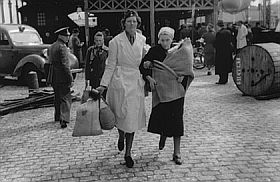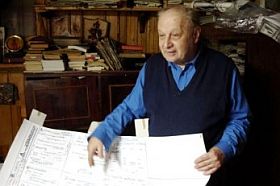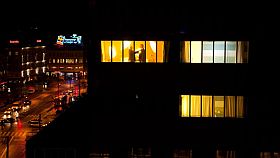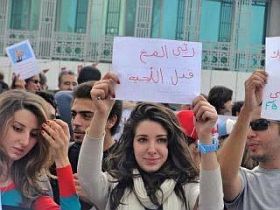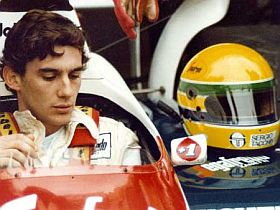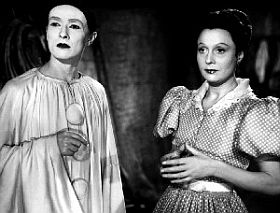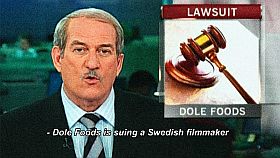An introduction taken from the synopsis of the film that had its world premiere at idfa 2011: Sociology professor Nicolae Dumitru believes strongly in true love. So strongly in fact that he has devoted his entire life to expounding his theory, which he calls Noosfera. His own scientific research, which he has chalked beautifully onto large sheets of paper, forms the foundation for his conviction that now, after four billion years, the spiritual era is about to dawn. From now on, society will develop solely in line with human need – and love will prevail. The fact that he has been largely unsuccessful in putting his theory into practice in his own life leaves him unfazed…
Indeed it does, and indeed the film circles around Nico, as he is called by the two of his wives, who live – literally – next door in the house, where he reigns behind a wall (the Berlin Wall one of the ex-wives calls it!) that he has had built to separate himself and his new wife to the old one! There is one more wife, who is only for a glimpse in the film, but the son is there, a skilled piano player with no contact to the patriarchal father, who pushed him to develop his creative talent.
Nico at the university where he teaches. Nico with Carmen, the new wife, much younger than him, will that work out?, Nico exercising on the balcony of the house in the small part where he lives. ”You can’t be a dreamer if you are not free”, says Nico, who also takes some weeks off to be alone in the mountains with his thoughts and with almost no food. When he comes back, having lost 10 kilos, he talks briefly to Melania, ”the transition wife”, as she says about herself. She is the one who best characterises the professor, showing photos of the two and love letters from him. Warm and aware of the excentricity of Nico, she is, as are the two directors, a couple, who again show s talent for catching everyday life situations and originality with respect, warmth and humour. Ileana Stanculescu made ”Village of Socks” and ”The Bridge”, Artchil Khetagouri ”Akhmeteli Street no. 4” from his home country, Georgia.
http://www.dokweb.net/en/ex-oriente-film/upcoming-films/-noosfera-31/?group=24&off=30
http://www.idfa.nl/industry/tags/project.aspx?ID=00f30f92-5b58-41ad-99ff-8f2e6c20d42f



